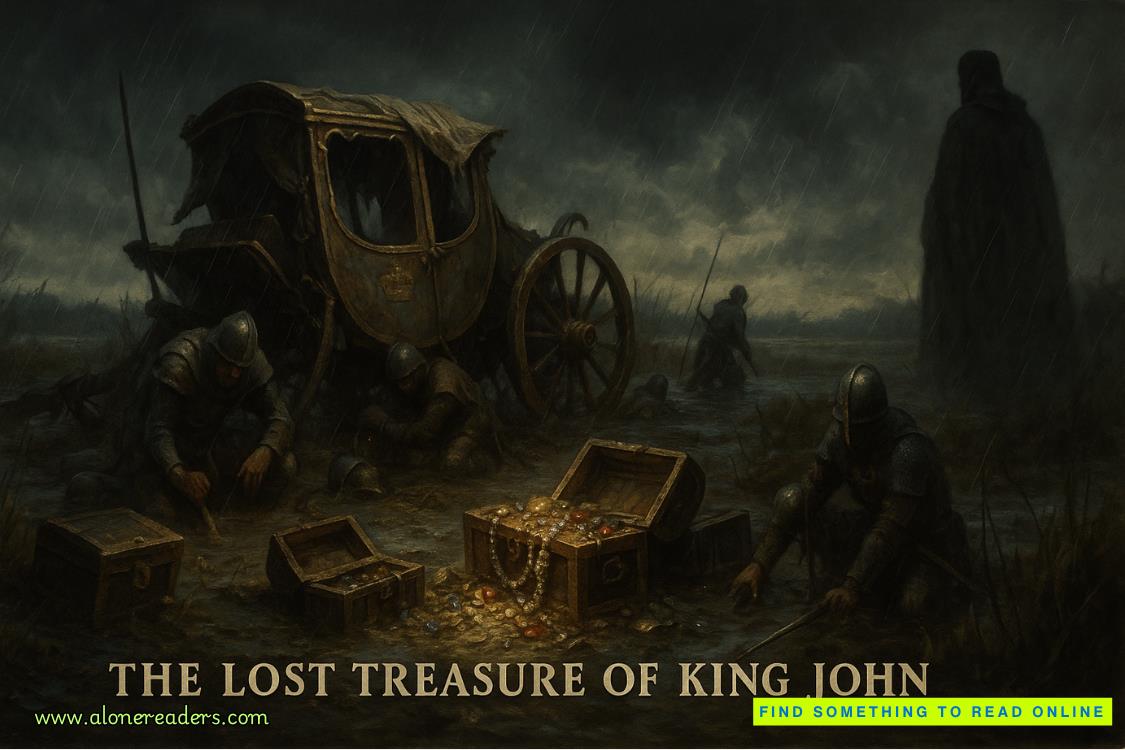At no time had Hobbits of any kind been warlike, and they had never fought among themselves. In olden days they had, of course, been often obliged to fight to maintain themselves in a hard world; but in Bilbo’s time that was very ancient history. The last battle, before this story opens, and indeed the only one that had ever been fought within the borders of the Shire, was beyond living memory: the Battle of Greenfields, S.R. 1147, in which Bandobras Took routed an invasion of Orcs. Even the weathers had grown milder, and the wolves that had once come ravening out of the North in bitter white winters were now only a grandfather’s tale. So, though there was still some store of weapons in the Shire, these were used mostly as trophies, hanging above hearths or on walls, or gathered into the museum at Michel Delving. The Mathom-house it was called; for anything that Hobbits had no immediate use for, but were unwilling to throw away, they called a mathom. Their dwellings were apt to become rather crowded with mathoms, and many of the presents that passed from hand to hand were of that sort.
Nonetheless, ease and peace had left this people still curiously tough. They were, if it came to it, difficult to daunt or to kill; and they were, perhaps, so unwearyingly fond of good things not least because they could, when put to it, do without them, and could survive rough handling by grief, foe, or weather in a way that astonished those who did not know them well and looked no further than their bellies and their well-fed faces. Though slow to quarrel, and for sport killing nothing that lived, they were doughty at bay, and at need could still handle arms. They shot well with the bow, for they were keen-eyed and sure at the mark. Not only with bows and arrows. If any Hobbit stooped for a stone, it was well to get quickly under cover, as all trespassing beasts knew very well.
All Hobbits had originally lived in holes in the ground, or so they believed, and in such dwellings they still felt most at home; but in the course of time they had been obliged to adopt other forms of abode. Actually in the Shire in Bilbo’s days it was, as a rule, only the richest and the poorest Hobbits that maintained the old custom. The poorest went on living in burrows of the most primitive kind, mere holes indeed, with only one window or none; while the well-to-do still constructed more luxurious versions of the simple diggings of old. But suitable sites for these large and ramifying tunnels (or smials as they called them) were not everywhere to be found; and in the flats and the low-lying districts the Hobbits, as they multiplied, began to build above ground. Indeed, even in the hilly regions and the older villages, such as Hobbiton or Tuckborough, or in the chief township of the Shire, Michel Delving on the White Downs, there were now many houses of wood, brick, or stone. These were specially favoured by millers, smiths, ropers, and cartwrights, and others of that sort; for even when they had holes to live in, Hobbits had long been accustomed to build sheds and workshops.
The habit of building farmhouses and barns was said to have begun among the inhabitants of the Marish down by the Brandywine. The Hobbits of that quarter, the Eastfarthing, were rather large and heavy-legged, and they wore dwarf-boots in muddy weather. But they were well known to be Stoors in a large part of their blood, as indeed was shown by the down that many grew on their chins. No Harfoot or Fallohide had any trace of a beard. Indeed, the folk of the Marish, and of Buckland, east of the River, which they afterwards occupied, came for the most part later into the Shire up from south-away; and they still had many peculiar names and strange words not found elsewhere in the Shire.
It is probable that the craft of building, as many other crafts beside, was derived from the Dúnedain. But the Hobbits may have learned it direct from the Elves, the teachers of Men in their youth. For the Elves of the High Kindred had not yet forsaken Middle-earth, and they dwelt still at that time at the Grey Havens away to the west, and in other places within reach of the Shire. Three Elf-towers of immemorial age were still to be seen on the Tower Hills beyond the western marches. They shone far off in the moonlight. The tallest was furthest away, standing alone upon a green mound. The Hobbits of the Westfarthing said that one could see the Sea from the top of that tower; but no Hobbit had ever been known to climb it. Indeed, few Hobbits had ever seen or sailed upon the Sea, and fewer still had ever returned to report it. Most Hobbits regarded even rivers and small boats with deep misgivings, and not many of them could swim. And as the days of the Shire lengthened they spoke less and less with the Elves, and grew afraid of them, and distrustful of those that had dealings with them; and the Sea became a word of fear among them, and a token of death, and they turned their faces away from the hills in the west.
The craft of building may have come from Elves or Men, but the Hobbits used it in their own fashion. They did not go in for towers. Their houses were usually long, low, and comfortable. The oldest kind were, indeed, no more than built imitations of smials, thatched with dry grass or straw, or roofed with turves, and having walls somewhat bulged. That stage, however, belonged to the early days of the Shire, and hobbit-building had long since been altered, improved by devices, learned from Dwarves, or discovered by themselves. A preference for round windows, and even round doors, was the chief remaining peculiarity of hobbit-architecture.
The houses and the holes of Shire-hobbits were often large, and inhabited by large families. (Bilbo and Frodo Baggins were as bachelors very exceptional, as they were also in many other ways, such as their friendship with the Elves.) Sometimes, as in the case of the Tooks of Great Smials, or the Brandybucks of Brandy Hall, many generations of relatives lived in (comparative) peace together in one ancestral and many-tunnelled mansion. All Hobbits were, in any case, clannish and reckoned up their relationships with great care. They drew long and elaborate family-trees with innumerable branches. In dealing with Hobbits it is important to remember who is related to whom, and in what degree. It would be impossible in this book to set out a family-tree that included even the more important members of the more important families at the time which these tales tell of. The genealogical trees at the end of the Red Book of Westmarch are a small book in themselves, and all but Hobbits would find them exceedingly dull. Hobbits delighted in such things, if they were accurate: they liked to have books filled with things that they already knew, set out fair and square with no contradictions.
2 Concerning Pipe-weed
There is another astonishing thing about Hobbits of old that must be mentioned, an astonishing habit: they imbibed or inhaled, through pipes of clay or wood, the smoke of the burning leaves of a herb, which they called pipe-weed or leaf, a variety probably of Nicotiana. A great deal of mystery surrounds the origin of this peculiar custom, or ‘art’ as the Hobbits preferred to call it. All that could be discovered about it in antiquity was put together by Meriadoc Brandybuck (later Master of Buckland), and since he and the tobacco of the Southfarthing play a part in the history that follows, his remarks in the introduction to his Herblore of the Shire may be quoted.











